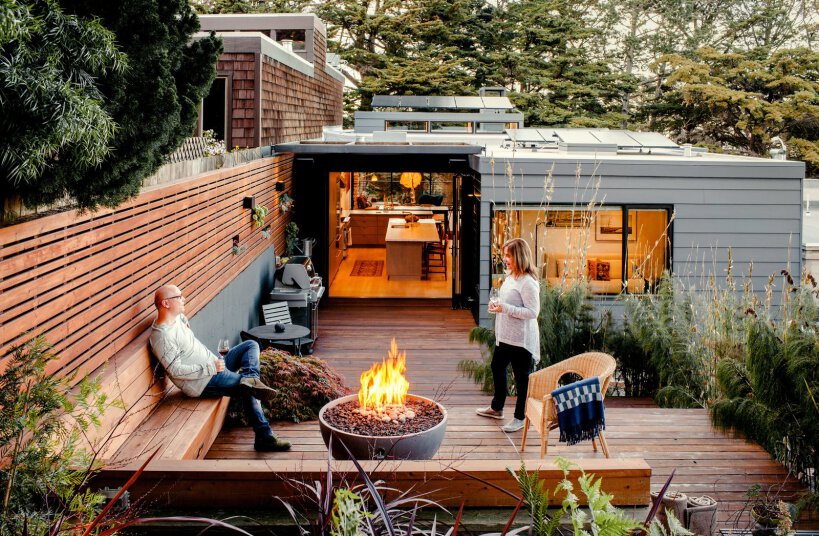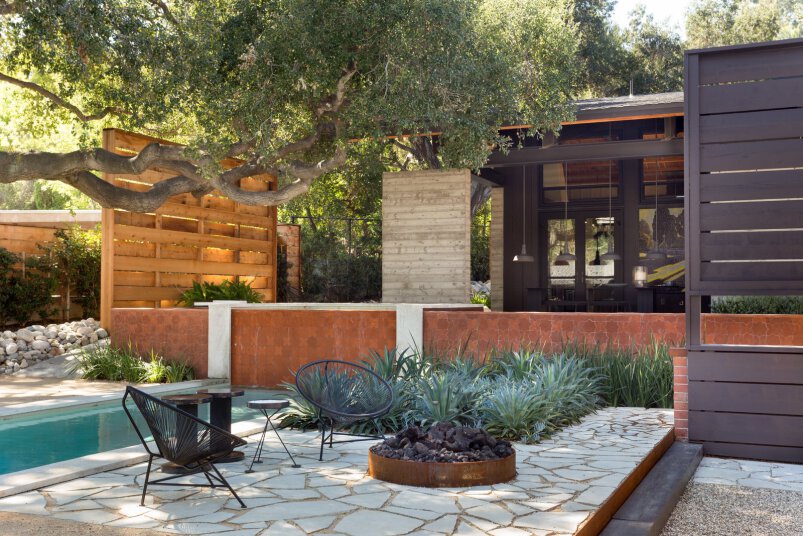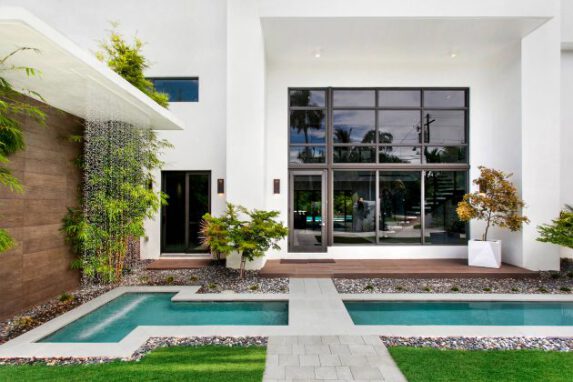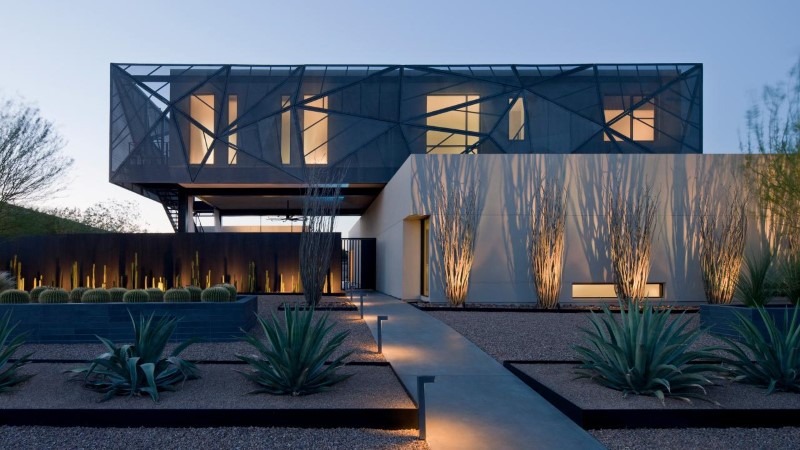
FERNICO
Would Make Your Dream
LANDSCAPING

What is landscaping?
Regarding what landscaping is, it should be acknowledged that landscaping is a combination of science and art that is armed with knowledge of gardening as well as familiarity with the elements and principles of landscape design. In this way, a landscaping expert can help you transform the space you want. The landscape architect, designer or contractor you have chosen for the work will guide you through the landscaping process, which includes the design and construction process. There are many options when it comes to landscaping. Some people want a perfectly balanced combination of hard landscape (like patio) and soft landscape (like plants). Some people want to have a sustainable landscaping that saves water and creates a natural landscaping. While other people want to recreate a particular style of garden and orchard such as modern or tropical. Some also want a complete space with an outdoor kitchen, fireplace and pool where they can entertain friends and family. Each part of the house, regardless of location, has its own value. For example, the interior of the shelter provides almost everything you need to have a comfortable life. But a home without an open space is not a perfect home. Landscaping the exterior of the house and villa is very important because it can feel too comfortable outside the house. A modern and well-designed landscape should draw you out of your home so that you can admire the environment it has created. It is very important to keep your gardening and landscaping at a standard level, especially in spring and summer when you can enjoy the lovely weather.


FERNICO Would Make Your Dream
After answering the question of what landscaping is, it is not bad to have a brief look at the history of this category. First of all, landscaping has been of interest to humans for thousands of years. The hanging gardens of Babylon are one of the most prominent examples of landscaping in ancient times. German artists in the 16th century used the term "landscaping" to describe landscape painting. The modern term "landscape" in English is borrowed from the Germans and refers to a visual image of open spaces; Thus, landscaping means visualizing a space and then operationalizing that space. Landscaping combines botanical elements such as trees, meadows, shrubs, and other flowering plants, as well as landscapes such as walkways, furniture, fountains, fountains, and railings, into an ideal arrangement.
Where did landscaping start?

What are the principles of landscaping?
Landscaping In order to provide a good output, it is necessary to follow a series of pre-defined principles, some of which are described below.
Coherence and coherence
Consistency in landscaping means repetition and stability between them. Repetition is used to induce coherence and consistency in your design by repeating different elements. Consistency is used to create coherence and coherence by matching different elements of a landscape together to create a common theme.
balance
Balance simply means a sense of equality, similarity and equivalence. The two types of balance in design are symmetrical balance and asymmetric balance. In symmetric equilibrium, two sides of the same landscape are balanced, while in asymmetric equilibrium, the landscape composition is balanced using different elements.
Contradiction and harmony
Contrast helps to highlight a particular element in the design. Harmony, on the other hand, helps to make the elements in a landscape look cohesive. Contrasting elements attract the viewer's attention when placed next to each other. Contrast and harmony are achieved by symmetrizing or juxtaposing any element of art or using complementary colors.
Color and coloring
Color and coloring instill a sense of vibrancy in your design. Earlier in the article on the psychology of color, the effect of color on the human soul and psyche was discussed in detail. Warm colors are more prominent and seem to be moving towards you while cool colors like blue and green seem to be moving away from you. Blue and green colors are widely used in creating landscapes.
Crossing
In other words, transition means gradual change. Transition in landscaping is indicated by the gradual alteration of plant size or color intensity. The transition can also be depicted in different textures, sizes and shapes of elements.
Rhythm and line
In terms of line architectural design, as a mother element, all other elements in architecture and landscape design are considered. Lines are used to create all design elements, including textures and landscapes. Lines are also used to give depth and distance.
Proportion
Proportion refers to the size of one element relative to another. Among these 8 principles of landscape architecture, this principle is the most obvious, but nevertheless, its correct and optimal use requires some planning and thinking. Proper use of this principle can ensure the appropriateness of the elements used in landscape design and architecture.
Repetition
Repetition is directly related to coherence and continuity. It is very good to have different and varied elements in a design, by repeating the same elements, different forms can be given to the design. Using many elements that have nothing to do with each other can make your design in landscape architecture look unplanned and sloppy. In addition, overuse of an element can make your design feel dull, ordinary, and monotonous.




Landscaping steps
Landscaping has different styles and therefore will differ in the details of implementation, but in general, landscaping can be summarized in the following steps.
The first step is to brainstorm and start the project
The second stage is to present the initial plan of the area based on the employer's opinions and the surveys that have been carried out.
The third step is to present the original design after applying the corrections and changes
The fourth step is to document the construction and prepare plans, sections, schedules, construction details, committees and other details to use them to estimate the cost of landscaping.
The fifth step is to start building the yard
Step 6: Troubleshoot potential problems and fix them
Step 7, Complete the manufacturing process

A variety of styles in landscaping
Eastern
In the oriental style, elegance is the first letter and the use of each element is aimed at creating a sense of calm. When we want to use the oriental style in our landscaping, the following elements must be added to it. These elements include fountains, fountains, ponds, bridges, sculptures, the use of bamboo plants and lanterns.

Modern
Clean lines and the use of bold patterns, the use of geometric, smooth and psychological forms of designs and the use of abstract and modern elements are among the components of contemporary landscaping design and common methods in this design style.

Desert
Desert style is more suitable for places with hot and dry weather. Desert landscaping style is not suitable for plants that need a lot of watering, the plants of these landscapes have less leaves due to the relatively dry rocks and soils and also have more drought tolerance.

Mediterranean
What is the Mediterranean landscaping style and how is it? In response, it should be said that the Mediterranean style, as another landscaping style, is becoming one of the most popular landscaping styles. In this style, elements such as columns, hedges, springs are used.

Tropical
The use of plants with large and lush foliage and planting plants with bright flowers are the features of this style.

Landscaping has become more important in today's urbanized world than ever before. The influx of people into apartment living has led to more attention to landscaping. Landscaping has been used for centuries, but what we know today as landscaping is only a few centuries old. In element building, they use certain principles mentioned above. Landscaping has different styles, each of which is based on a specific process.









